The earth might seem like a big solid rock, especially from the surface. However, the solid earth you’re standing on is actually in motion. Ever so slightly, that surface is moving several inches a year. The theory behind this movement is known as plate tectonics and it’s a fascinating concept for students to learn about.
Tectonic motion and its effects – including mountain ranges and earthquakes – are what you’ll be exploring in the following edible plate tectonics science activity.
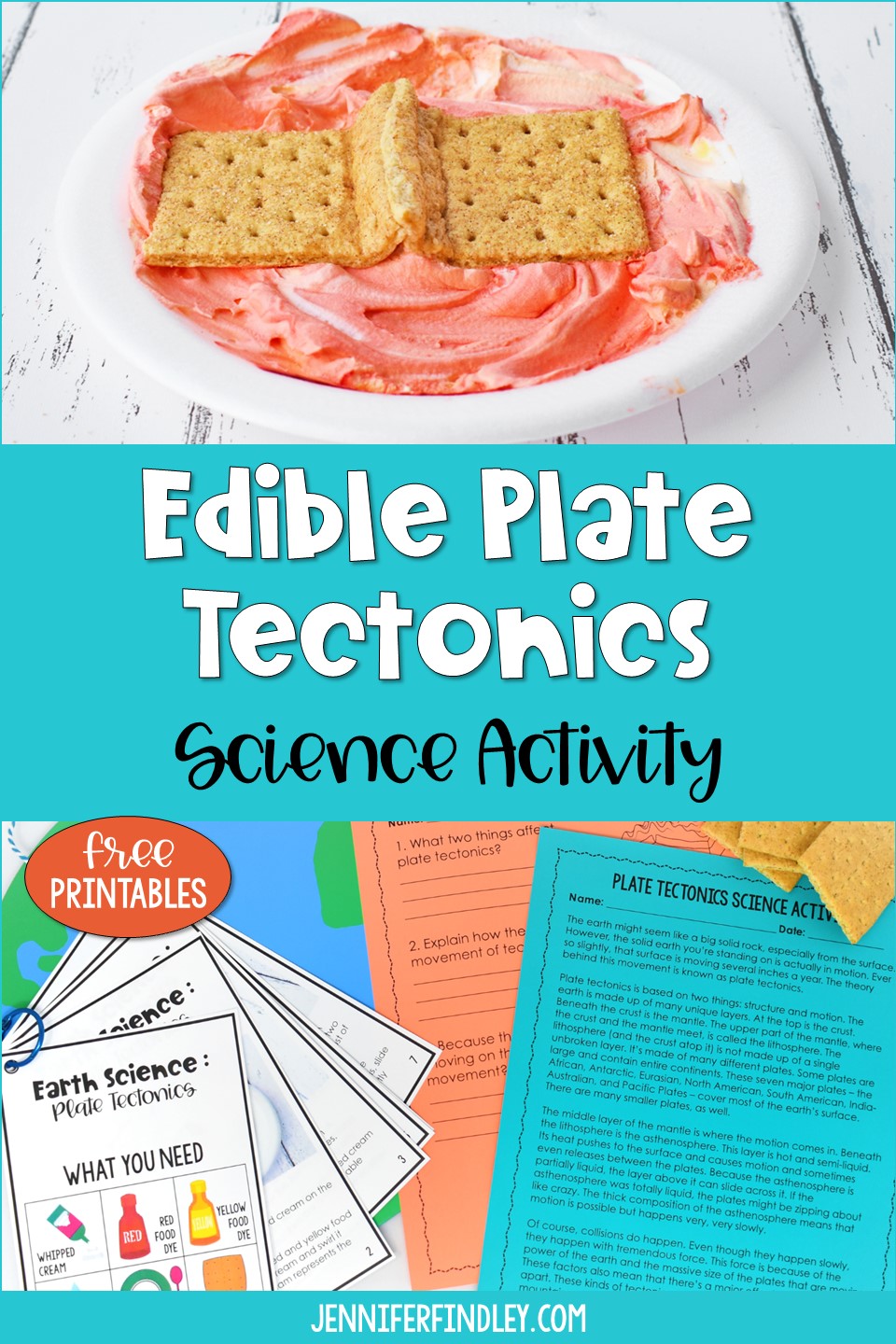
Want to see more science activities and resources?
Plate Tectonics Science Activity Materials Needed:
- a small plate
- whipped cream
- red food coloring
- yellow food coloring
- graham crackers
- water
- a spoon
- free reading passage and comprehension questions download (at the end of this post)
Plate Tectonics Science Activity Directions
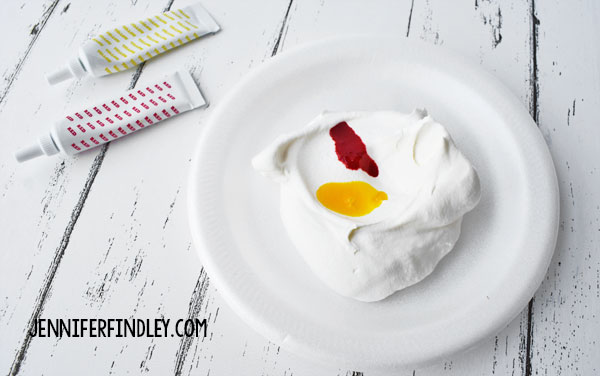
2. Add a couple of drops of red and yellow food coloring to the whipped cream and swirl it around. This whipped cream represents the Earth’s mantle.
3. Carefully break apart several graham crackers. These show the Earth’s plates. (Resist the urge to eat them; whipped cream and graham crackers are a delectable combination.)
4. Start with a transform plate boundary. A transform boundary occurs when two plates slide past each other without causing any damage. Slide the graham crackers past one another in the whipped cream.
5. Introduce a convergent plate boundary. A convergent plate boundary occurs when two plates move toward each other.
6. When one plate moves underneath another plate, it creates a subduction zone. Slide one graham cracker underneath the other in the whipped cream.
7. When they collide, they can form mountains or ocean trenches. Quickly dip the ends of two graham crackers into water, and place them back into the whipped cream. Pushing the soggy ends together will allow a “mountain” to form.
8. Introduce a divergent plate boundary. A divergent plate boundary occurs when two plates move away from each other. Most of these are located on the ocean floor.
9. The separation allows magma to come through the plates. To demonstrate this, slide the graham crackers apart while gently pushing down on them.
The Science Behind the Plate Tectonics Science Activity
Plate tectonics is based on two things: structure and motion. The earth is made up of many unique layers. At the top is the crust. Beneath the crust is the mantle.
The middle layer of the mantle is where the motion comes in. This layer is hot and semi-liquid. Its heat pushes to the surface and causes motion, the layer above it can slide across it.
Collisions happen slowly, but with tremendous force. This force results in mountains and earthquakes.
After the Science Demonstration: Reading Activity
I like to incorporate reading and writing into every science experiment, activity, or demonstration that we do and this is no exception.
For this activity, the students will read a short text that describes the science behind it (similar to what is explained above for the teacher reference). Then the students will use the details they learned in the text to explain what happened during the science demonstration. They will also answer three comprehension questions using details from the text.
The questions your students will answer include:
- What two things affect plate tectonics?
- Explain how the asthenosphere affects the movement of tectonic plates.
- Because there are plates that are constantly moving on the earth, what are two results of that movement?
After reading the passage and answering the questions, you can invite your students to share their responses and have a classroom discussion about plate tectonics.
How Can I Get the Free Printable Pack?
What are your favorite science or STEM activities? Let me know in the comments! I am always looking for new science experiments that my students will love.
If you want more resources and even freebies for science, click here to check out my other posts, such as apple oxidation, erosion with grass, dissolving Peeps, gingerbread cookies and candy hearts, creating avalanches and frost, states of matter with chocolate, experiments with growing plants and flowers (including a seed race), and much more.
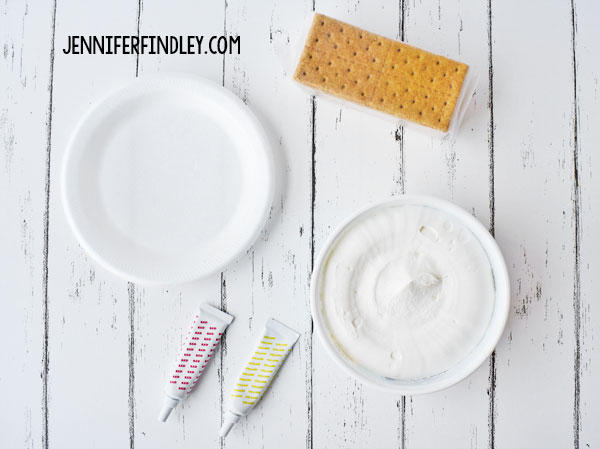
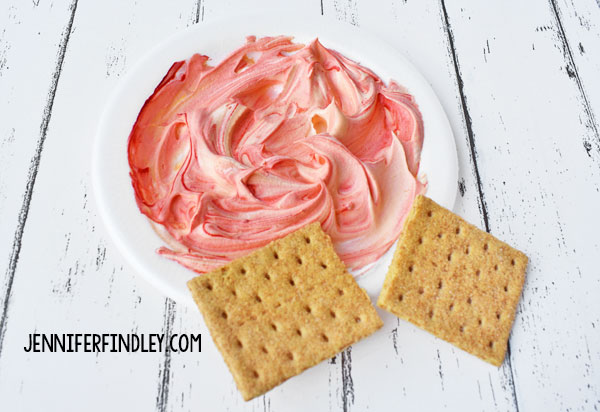
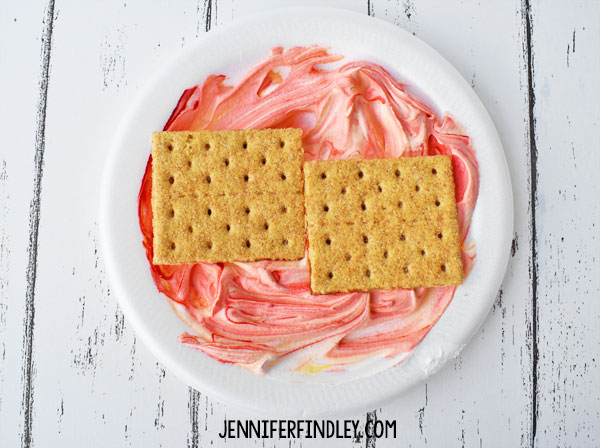
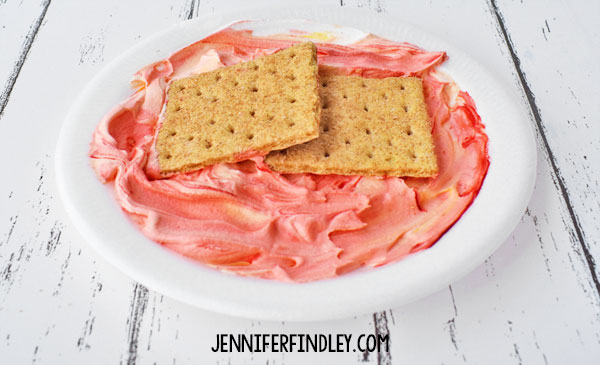

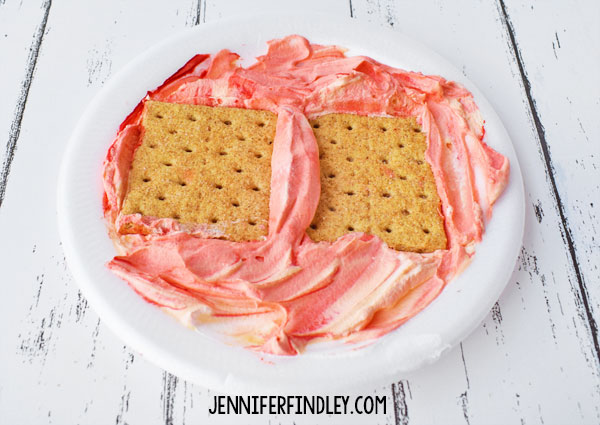
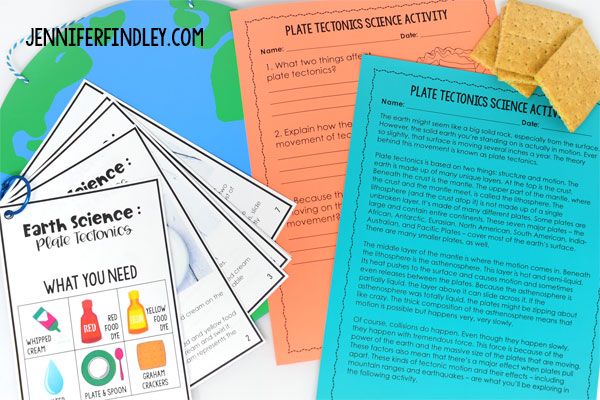
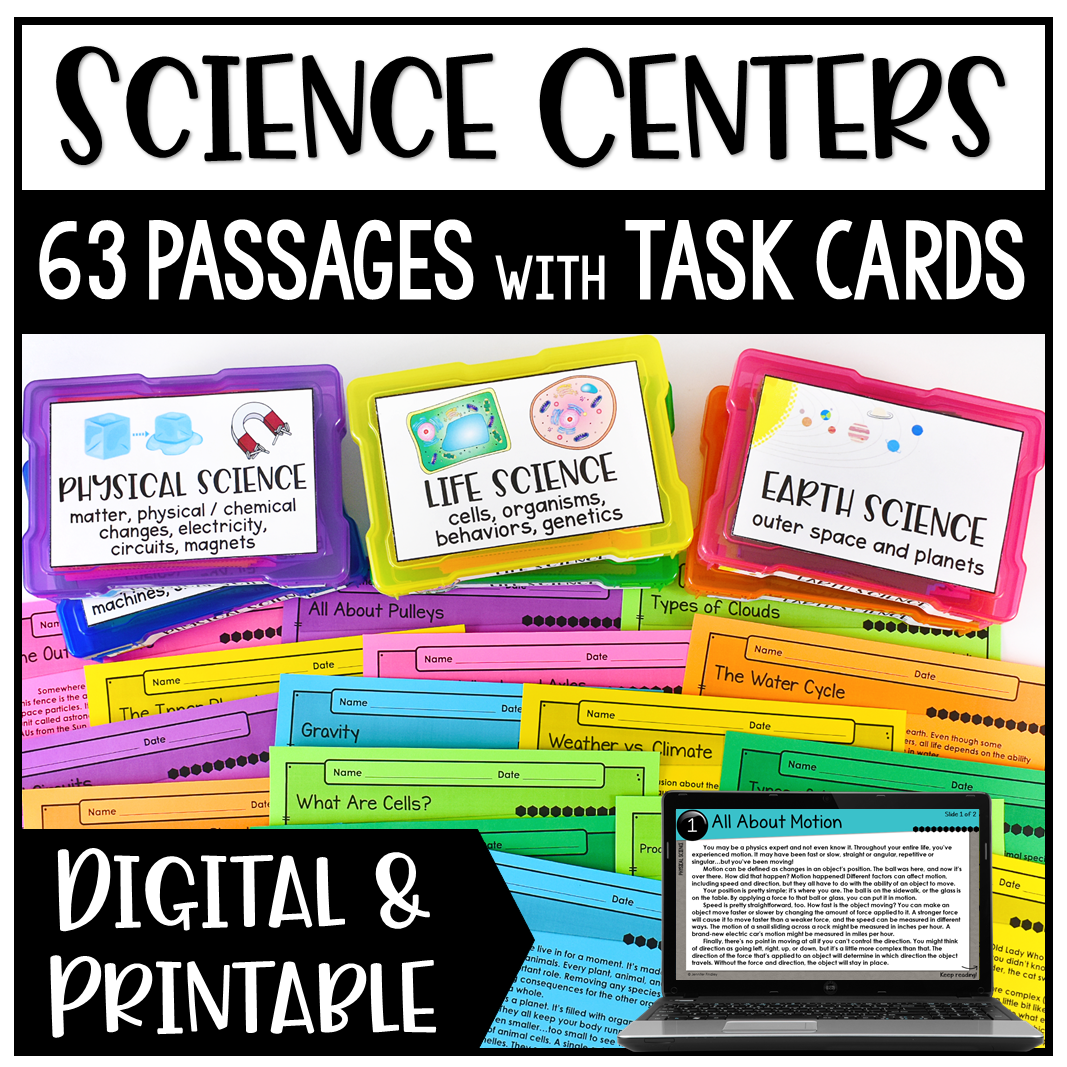








Leave a Comment